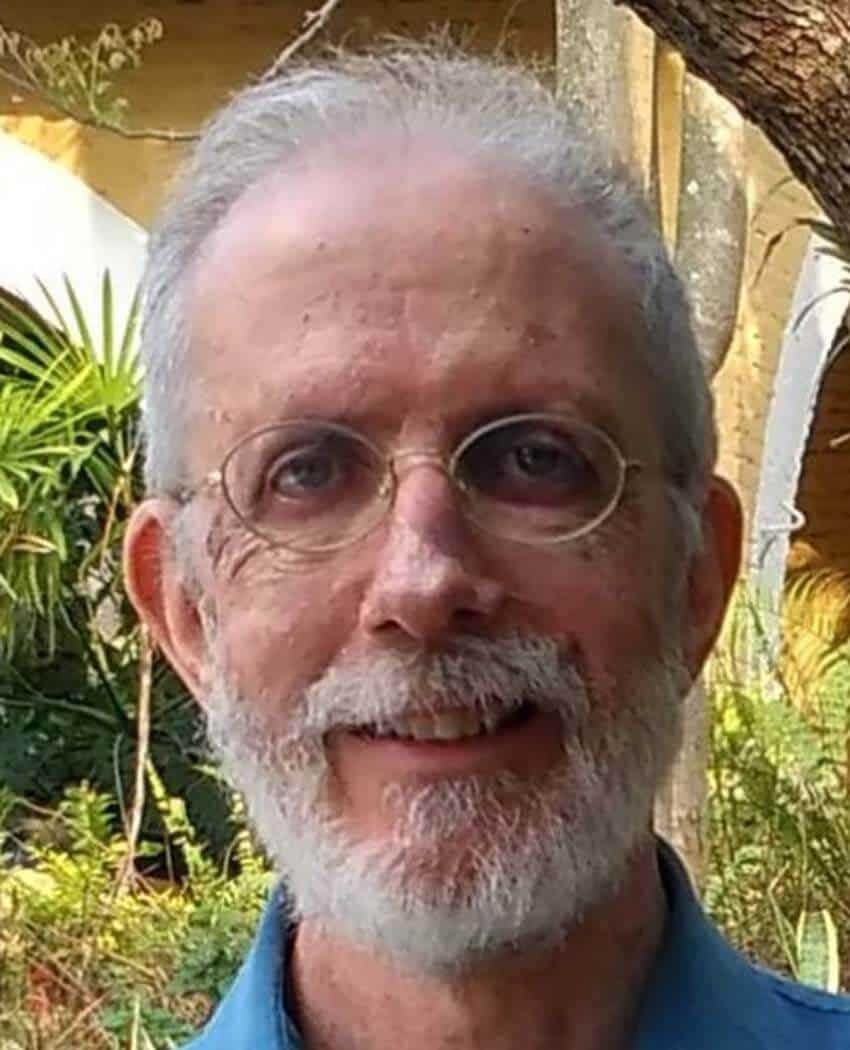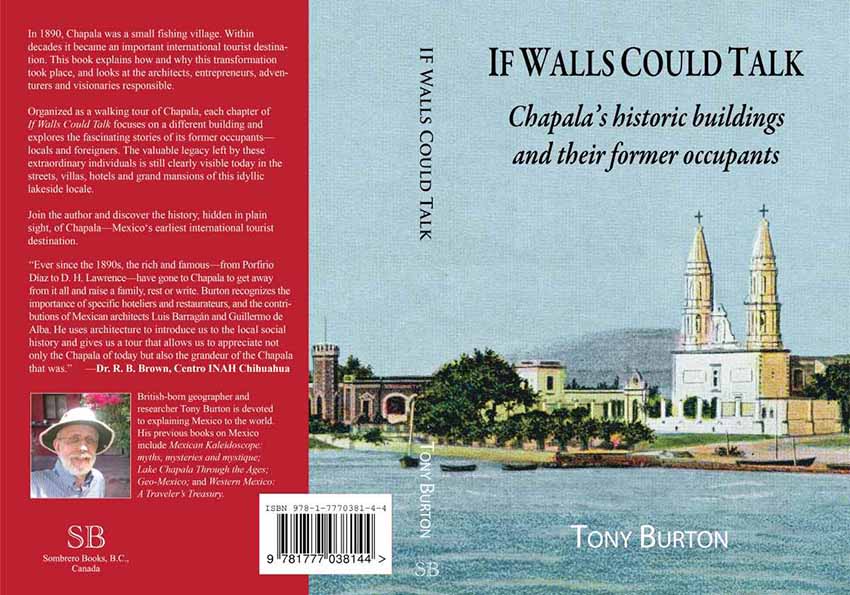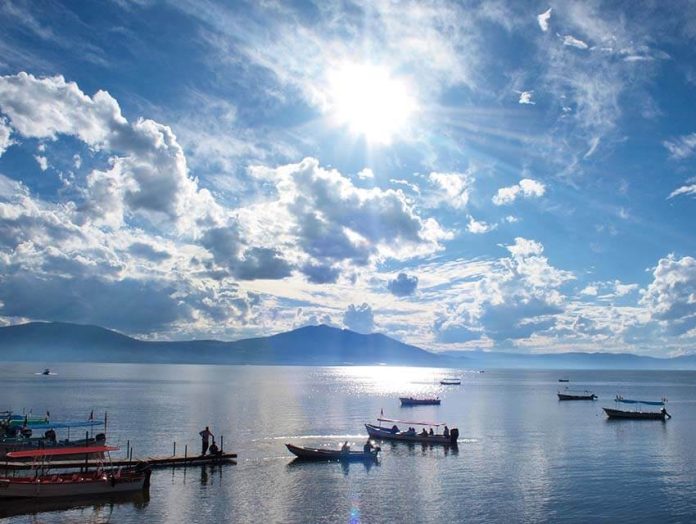There is a stereotype that foreigners from the United States, Canada and Europe come to Mexico to take advantage of sun, tequila and a great exchange rate and have no interest in the country beyond that.
Now, I will admit that there are such people here, but my experience writing for Mexico News Daily and others has shown me that there are definitely those of us who come with — or develop — a real desire to understand this country. There are audiences for the kind of writing that delves into Mexico’s history, environment and culture, which creates opportunities for people with a passion for researching and writing about such things.
One of these people with such a passion is U.K.-born, Cambridge University-trained geographer Tony Burton. He has been exploring, researching and writing about Mexico for over 40 years. His books include Lake Chapala Through the Ages: An Anthology of Travelers’ Tales (2008); Geo-Mexico, the Geography and Dynamics of Modern Mexico (2010); Western Mexico, A Traveler’s Treasury (4th edition, 2013); Mexican Kaleidoscope: Myths, Mysteries and Mystique (2016); and his most recent book, If Walls Could Talk: Chapala’s Historic Buildings and Their Former Occupants (2020). Later this month, a new book, Foreign Footprints in Ajijic: Decades of Change in a Mexican Village, officially hits the shelves.
Burton’s Mexican journey actually started in St. Kitts, where he worked in research and teaching. One of the courses he taught there was heavily focused on Mexico, which gave him background information and a desire to see the country for himself.
He arrived in Mérida in the summer of 1977, and as he backpacked around southern and central Mexico, he found it even more exciting than he’d imagined.

He returned to the United Kingdom, intending to do a doctorate, but in 1979 he found himself in Mexico City instead, working for a private school. From then until 1986, he spent as much time as he could traveling, managing to visit just about every state.
He then moved to Guadalajara and continued teaching, forming a nonprofit called Odisea México, which organized mostly earth science fieldwork courses for high school and college students in the states of Jalisco, Michoacán and Querétaro, eventually adding eco-tours for adults to destinations such as the Paricutín volcano, the monarch butterfly sanctuaries and the Copper Canyon.
Many teachers and researchers seem to wind up writing in one way or another, and Burton is no exception. Over the years, he has written hundreds of articles as well as various books. As an academic, he tends to avoid the glitzy, superficial travel magazine articles in favor of those that seek authors who can write with some depth. But it is Burton’s books where his knowledge of Mexico really shines.
Even if you stretch the concept of a travel book, only Western Mexico, A Traveler’s Treasury comes anywhere close to that genre. Its purpose, however, is not to give tips about hotels, bars and restaurants but rather to give the serious traveler reasons to explore the small towns and natural areas around Guadalajara.
Burton states that his book is “… aimed at the intellectually curious traveler who wants to know about the lesser-known treasures of western Mexico; it ignores the cities and shares the background (history, ecology, myths, whatever) needed to enjoy each place.”
Lake Chapala Through the Ages is more of a history book, a sort of traveler’s documentation of the area from 1530 to 1910. Burton looked for first-person accounts and other documents, which he presents with commentary and explanations.

The push behind the book was his frustration with many “facts” and hearsay stories that endlessly get repeated in this region popular with many expats.
Mexican Kaleidoscope summarizes events, individuals, myths and mysteries that present Mexico as “an extraordinarily diverse and fascinating place,” in his words. It is a kind of a follow-up to a book of the same title by Norman Pelham Wright published in 1947. Geo-Mexico, the Geography and Dynamics of Modern Mexico, written with Dr. Richard Rhoda, was the first English-language university textbook on Mexican geography.
After marrying and becoming a parent, Burton and his wife decided to move to Canada in 1997 for the sake of their two children’s education, but his relationship with Mexico did not end: he was an early adopter of what the digital age has to offer writers and entrepreneurs and has continued to write, edit and translate as well as organize specialized tours, allowing him to keep spending significant time here in the south.
In 2020, that work included efforts to save the veteran expat website MexConnect.com, started in the late 1990s by David McLaughlin. Burton was involved with it in various ways, but in the 2010s, the site had problems keeping up with technology. This and McLaughlin’s untimely death in 2019 almost meant the site’s demise.
Burton and McLaughlin’s daughter worked to keep the site and its valuable archive of articles accessible — with a new article added now and then. Burton believes that saving this site is important precisely because there is a reading public beyond the “stereotypical gringo.”
Leigh Thelmadatter arrived in Mexico 18 years ago and fell in love with the land and the culture in particular its handcrafts and art. She is the author of Mexican Cartonería: Paper, Paste and Fiesta (Schiffer 2019). Her culture column appears regularly on Mexico News Daily.
